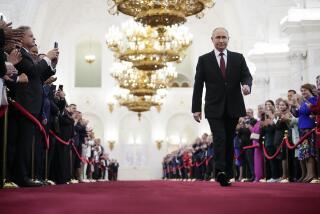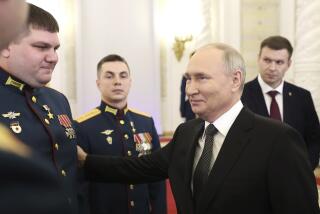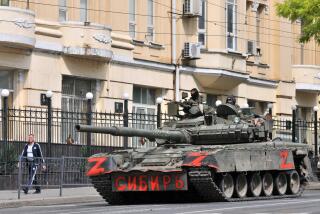SHOWDOWN IN MOSCOW : Timeline of Russian Politics
- Share via
Key events in Russian politics since the failed Soviet coup in August 1991:
1991
August--Russian Federation President Boris N. Yeltsin emerges as nation’s most powerful politician after Soviet coup fails. Yeltsin suspends the Communist Party of Soviet Union and seizes its property.
October--Yeltsin outlines radical reform program, including freeing prices and privatizing small businesses.
November--Yeltsin names himself head of government, takes over duties of prime minister.
December--Russia, Ukraine and Belarus form Commonwealth of Independent States. Soviet President Mikhail S. Gorbachev resigns.
1992
November--In mixed decision, Constitutional Court upholds Yeltsin’s ban on the Communist Party’s leadership, but allows grassroots party organization.
December--Under pressure from parliament to soften his reforms, Yeltsin replaces reformist acting prime minister. Battles parliament Chairman Ruslan I. Khasbulatov over balance of power between president and parliament.
1993
April--Yeltsin wins nationwide referendum on his rule and reforms. Vice President Alexander Rutskoi levels allegations of high-level corruption throughout the administration.
June--Yeltsin calls a convention to draft a new constitution. Khasbulatov boycotts the gathering.
July--While Yeltsin is on vacation, hard-line lawmakers roll back a series of his reforms, including privatization and media laws. They also urge prosecution of some top Yeltsin aides for alleged corruption.
August--Yeltsin vows a “showdown” with his rivals in September. Denies rumors he is ill.
Sept. 21--Yeltsin disbands the hard-line Congress and announces new parliamentary elections in December, seizing complete control of the country.
More to Read
Sign up for Essential California
The most important California stories and recommendations in your inbox every morning.
You may occasionally receive promotional content from the Los Angeles Times.










